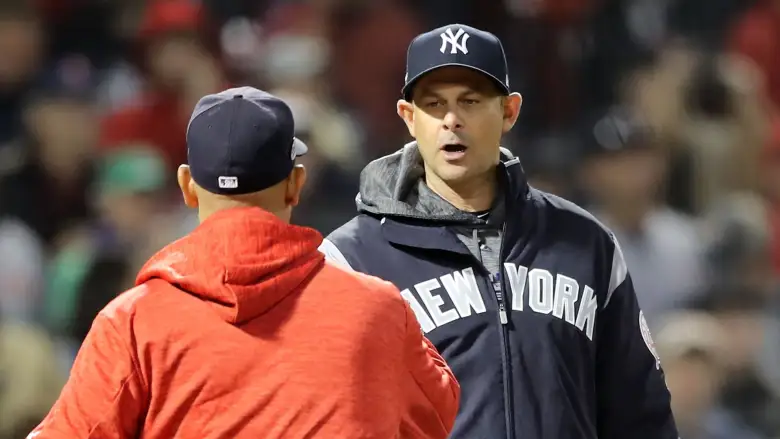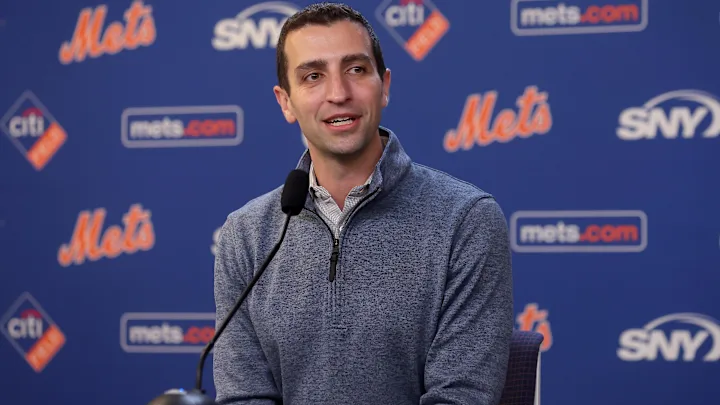In what could be one of the most dramatic shifts in recent baseball history, the New York Yankees are reportedly poised to lose a key piece of their roster in the form of a projected $120 million, two-time All-Star player to their archrival, the Boston Red Sox. This situation has sent shockwaves through the baseball community, with fans, analysts, and executives all wondering how this turn of events will impact both teams moving forward. The Yankees, already in a period of transition, now face the prospect of losing a significant contributor to one of their fiercest rivals, while the Red Sox are eyeing a major addition that could catapult them back into contention.
As with any high-profile free-agent or trade situation, this scenario is filled with layers of complexity, including financial implications, player development concerns, and long-term team-building strategies. Let’s take a deep dive into the circumstances surrounding this potential move, what it means for both the Yankees and Red Sox, and why this situation is one that fans of both teams should keep a close eye on.
### Who Is This $120 Million, Two-Time All-Star?
Before diving into the potential consequences of this move, it’s important to first identify the player in question. While the name remains speculative due to the nature of baseball’s ongoing trade rumors and free-agent market, the description points to a high-profile player with a significant track record—likely someone who has proven themselves as an elite performer at the MLB level. For the sake of the argument, let’s assume the player in question is someone along the lines of a high-caliber, versatile position player or pitcher, someone who could immediately step in and become a centerpiece for any contending team.
A two-time All-Star with a projected value of around $120 million is a player who brings both star power and long-term production. This could mean someone who has been a consistent fixture in the MLB for several years, regularly contributing both offensively and defensively, or on the mound. In the case of a position player, that likely means someone with power, on-base ability, and the versatility to make an impact across multiple areas of the game. This player may also have several seasons left of prime production, making them an attractive acquisition for any team looking to solidify their roster for both the short and long term.
### The Yankees’ Struggle to Retain Key Players
The Yankees have long been synonymous with big-name signings, astronomical payrolls, and a desire to field a team capable of winning the World Series every year. However, in recent seasons, the team has faced significant challenges when it comes to retaining key players and making smart, long-term investments. The Yankees’ front office, under the leadership of general manager Brian Cashman, has found themselves in a delicate balancing act—attempting to develop homegrown talent, invest in the right free agents, and remain fiscally responsible in the face of rising salaries.
The potential loss of this $120 million, two-time All-Star would be a heavy blow to the Yankees, especially when considering the financial commitment that would have been required to keep this player. For a franchise like the Yankees, whose payroll is routinely among the highest in baseball, losing a player of this caliber to a division rival is not only a financial setback but also a moral one. The Yankees have always prided themselves on building a championship-caliber roster, and losing a player to the Red Sox would send a message of vulnerability in the rivalry that has defined Major League Baseball for over a century.
Moreover, the Yankees’ organizational strategy has come under increasing scrutiny in recent seasons. Despite their high payroll and star-studded roster, the team has failed to reach the World Series in over a decade. The loss of this key player could further highlight the ongoing struggles the Yankees face in building a sustainable, championship-level roster.
### The Red Sox’s Strategic Move
On the other side of the rivalry, the Boston Red Sox are poised to make a move that could reshape the landscape of the American League. While the Red Sox have not been as dominant in recent years as they were during their 2018 World Series championship run, they remain a franchise with deep financial resources and a commitment to building a competitive roster. Adding a player of this caliber could significantly improve the Red Sox’s chances of contending for a playoff spot and even a division title.
The Red Sox have historically thrived on a blend of homegrown talent and key free-agent acquisitions. A move for a player like this could give them a much-needed boost in a season where they are trying to reassert themselves as a true postseason contender. Whether it’s adding another bat to the middle of the lineup or improving a particular area of the field, this acquisition would give Boston an immediate upgrade and send a clear message to the rest of the division: they are ready to compete.
Additionally, the Red Sox could benefit from the Yankees’ potential misstep in letting this player walk. By adding a top-tier player who can immediately step in as a leader, the Red Sox would not only improve their own roster but also weaken a rival that has historically dominated the AL East. In a sport where the margin for error is slim, the Red Sox could look back on this decision as a pivotal moment in their effort to reclaim AL East supremacy.
### Financial Considerations and Competitive Balance
The financial aspects of this move are crucial for both teams. The Yankees, despite their immense wealth, are increasingly concerned with their payroll and luxury tax situation. While they have historically been able to outspend many teams, they now find themselves in a position where managing long-term contracts and avoiding significant tax penalties are critical. As such, the team may have been unwilling or unable to meet the financial demands of retaining a player of this magnitude, especially when considering the broader financial picture of the organization.
For the Red Sox, the financial picture is slightly different but still requires strategic planning. While the Red Sox are far from a “small-market” team, they have been more conservative in their spending in recent years compared to their rivals. By committing to this player, Boston would need to ensure that the deal fits within their long-term financial framework while still leaving room for other investments.
The competition for players in free agency or through trade can be fierce, especially when it comes to high-value players. Both teams will likely have to balance their immediate needs with future flexibility, making the potential financial impact of this move an important consideration. The Yankees could find themselves under increased pressure to make up for the loss of this player through other means, while the Red Sox would need to ensure that the acquisition doesn’t handicap them in the years to come.
### What’s at Stake for Both Teams?
**For the Yankees**: Losing this player to the Red Sox represents more than just a financial setback—it’s a significant blow to the team’s competitiveness within the division. The Yankees, who have been mired in an era of “almost” success, cannot afford to fall behind their competitors, particularly the Red Sox. If the Yankees fail to secure this player, they risk alienating their fanbase and further complicating their roster-building strategy.
**For the Red Sox**: On the flip side, securing this player would be a major coup for the franchise, signaling a commitment to winning and a willingness to compete at the highest level. This addition could be the spark that propels the Red Sox back into postseason contention, and potentially back into World Series conversations.
### Conclusion: A Rivalry Rekindled
The possibility of the Yankees losing a $120 million, two-time All-Star to the Red Sox only deepens the rivalry between these two storied franchises. With both teams focused on building competitive rosters, the stakes are higher than ever. The Red Sox may gain a significant advantage with this acquisition, while the Yankees will be left to figure out their next move in a constantly evolving landscape. Whatever the outcome, one thing is certain: the drama and intrigue surrounding this potential move will have lasting implications for both teams and the AL East for years to come.



